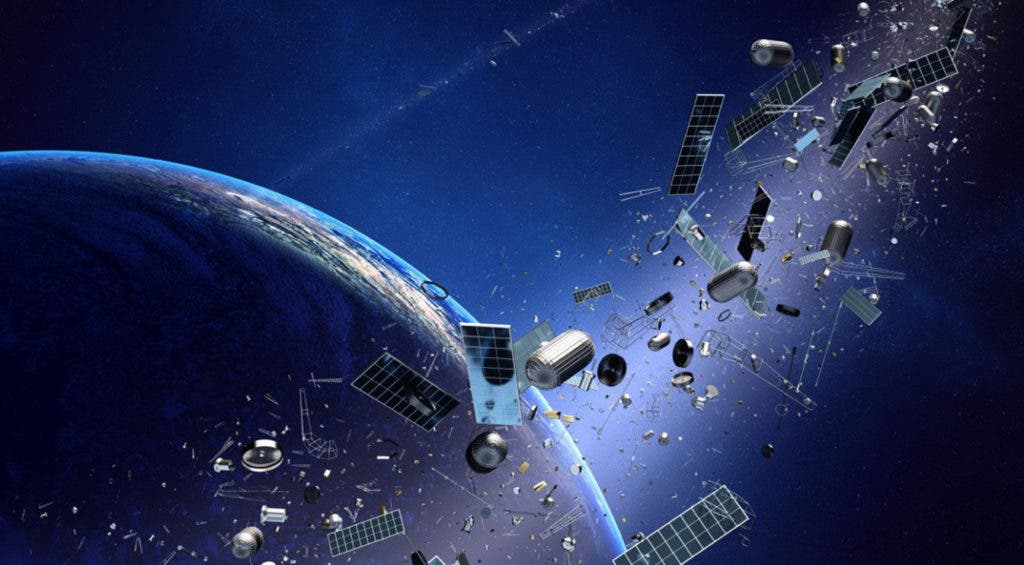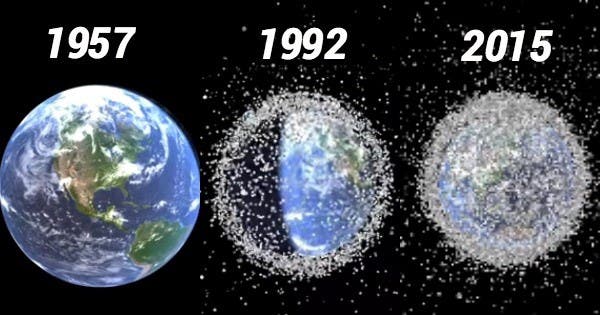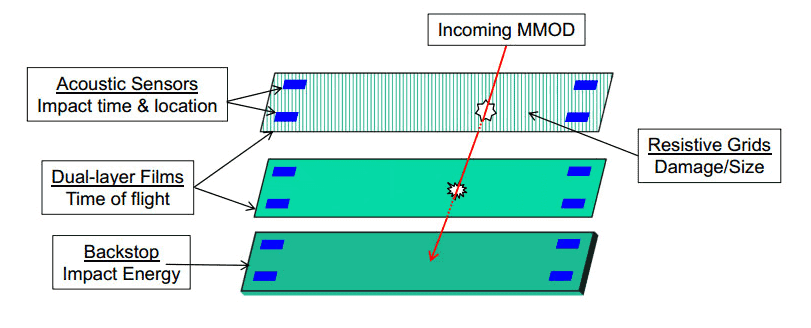A new tool will soon help protect astronauts aboard the International Space Station (ISS) from the perils of space junk whizzing past at phenomenal velocities.

Ever since humans have started sending ‘stuff’ into space, Earth’s low orbit has steadily grown into a cosmic dumpster. Suffice to say, objects like pieces of defunct satellites or shrapnel from exploding military rockets (yes, some people were this bright) can cause significant economic damage and could even claim human lives. Four times in its history the ISS crew has retreated to the docked Soyuz lifeboat due to a potential impact.
NASA is monitoring some of the biggest pieces of junk out there, including 20,000 objects as big or bigger than a baseball and 50,000 objects or so as big as a marble. Smaller pieces of debris, however, are virtually undetectable right now, but NASA estimates there are millions of objects that are 50 microns to 1 millimeter in diameter. That might not seem like such a big deal but consider that these tiny debris travel at 17,500 miles per hour. At these velocities, even an object with a tiny mass can exert a powerful kinetic energy capable of significant damage upon impact.

I can sense the junk

To address a growing space junk problem, NASA is sending a nifty gadget called the Space Debris Sensor (SDS) with the upcoming SpaceX re-supply mission, scheduled for Dec. 12.
The device measures about one square meter. It will be mounted on an external payload site facing the velocity vector of the ISS (towards its ‘front’) where it will remain for at least 3 years. The location on the Columbus module is the same previously used by the European Technology Exposure Facility (EuTEF) which included two debris measurement sensors, exposed from February 2008 to September 2009.
SDS is comprised of two distinct and important layers. The first layer consists of a thin section of Kapton, which is a polyimide film that remains stable at extreme temperatures. Some 15 cm behind it lies the second Kapton layer which is dotted with sensors and wires.

With this configuration, the sensor can record size, speed, direction, or energy of any small debris it comes in contact with. This data is then beamed back to Earth where scientists at the White Sands Test Facility in New Mexico and at the University of Kent in the UK are focused on interpreting it.
Armed with real-time impact data, researchers can then get a far better sense of how common small debris are and how their population changes with time. Ultimately, such knowledge will prove handy in future missions, manned or otherwise, enabling scientists to better plan ahead.
“[O]nce you know the hazard you can adjust the design of future missions to protect them from impacts, or you are more persuasive when telling satellite manufacturers they have to create less debris in future,” Dr. Mark Burchell, one of the co-investigators and collaborators on the SDS from the University of Kent, told Universe Today. “Or you know if you really need to get rid of old satellites/ junk before it breaks up and showers earth orbit with small mm scale debris.”
At the moment there is no real solution to space junk. However, there are some scientists working on ideas.
In 2012, Swiss scientists launched a pilot program called the CleanSpace One which is basically a ‘space janitor’. The satellite will track and offset debris so that their trajectory puts them on a collision course with Earth’s atmosphere, to burn up on re-entry. Japan has a mission called Kounotori 6 which can tether space junk with electromagnetic forces. Astroscale, a Japanese startup, plans is to launch a satellite called ELSA-1 that will track debris and stick to it with glue. Other ideas are even wilder, like using lasers to vaporize the surfaces of small junk pieces, forming miniature trusters to force debris down towards the atmosphere. One recent project that the European Space Agency (ESA) is currently working on involves using powerful magnetic beams from a chaser satellite to nudge redundant satellites out of orbit.


